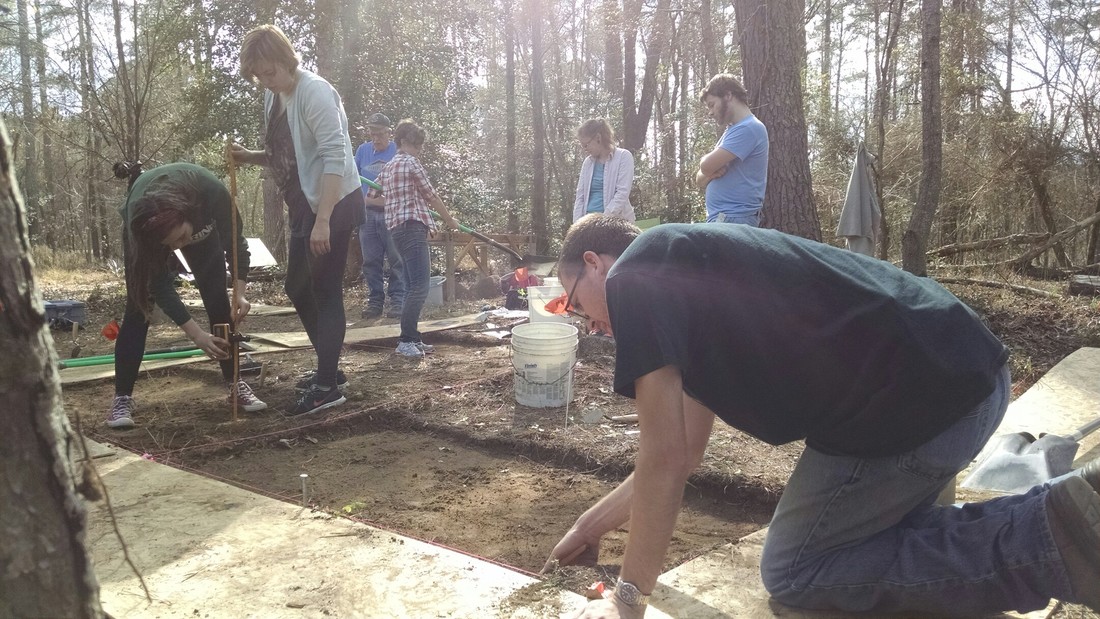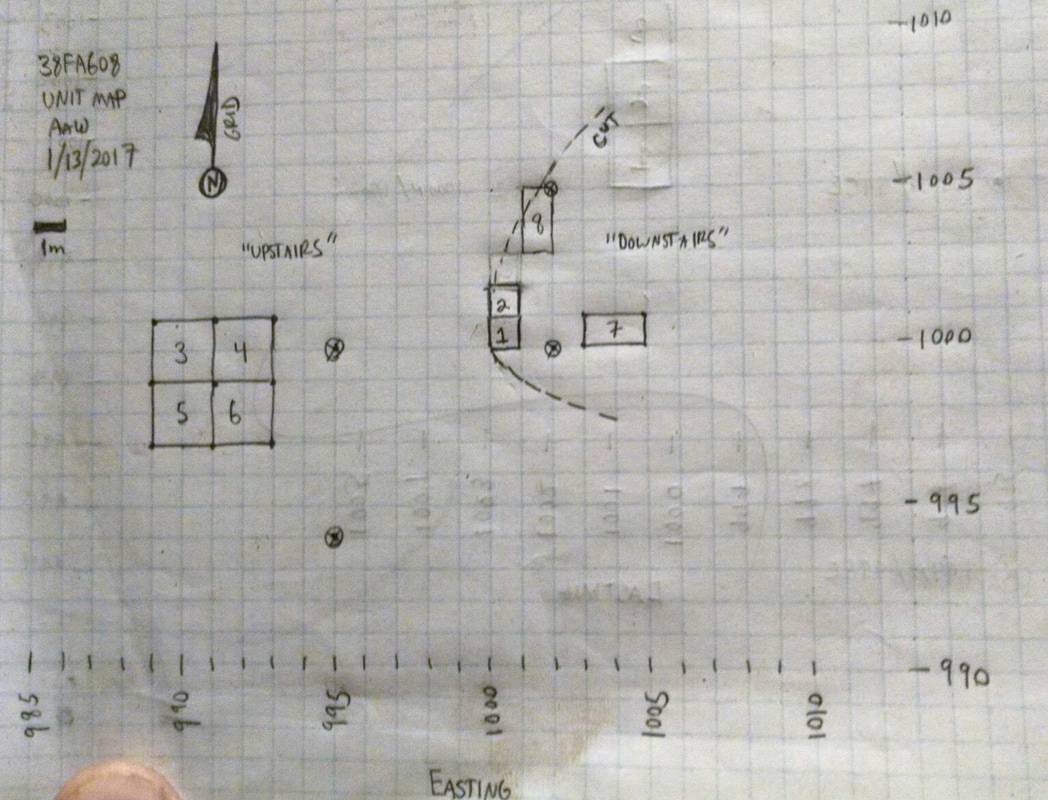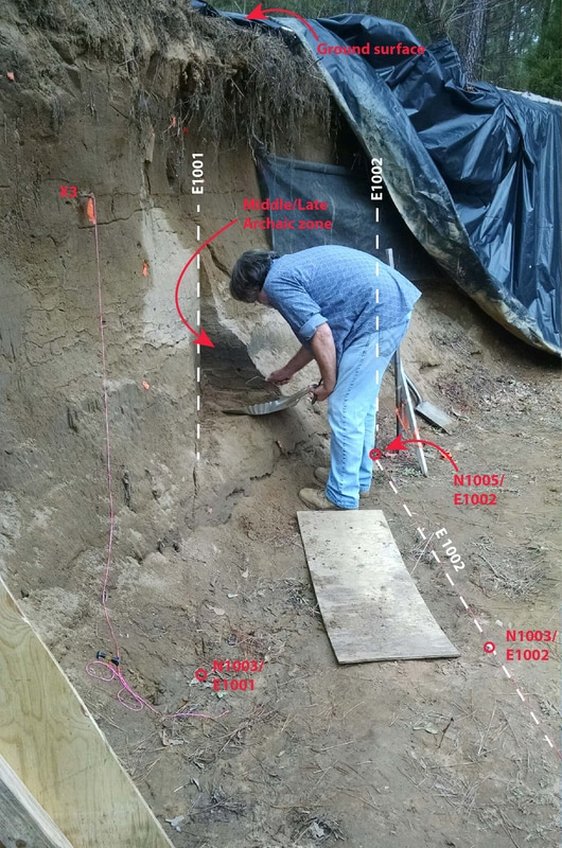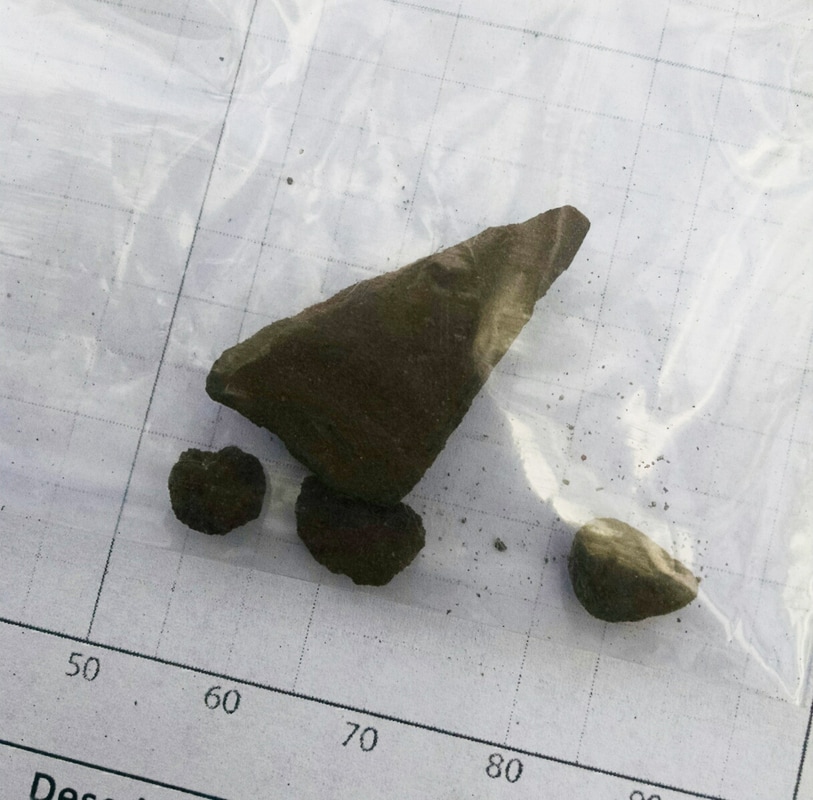Most of the students worked with me and DuVal Lawrence in the "upstairs" part of the site, excavating the first levels of the units in the 4m x 4m block. Jim Legg and one student worked "downstairs," beginning excavations with the goal of creating a 5m profile wall along the 1000E line. Here is the updated unit map showing the placement of Unit 8 in the "downstairs" portion of the site:
I split the students into three groups and gave each group the task of excavating the southeastern 1m x 1m quadrant of their 2m x 2m unit. We went over the basic procedures of getting paperwork set up, labeling bags, double checking coordinates, and taking beginning depths. For the block excavation, we're controlling elevation using a rotating laser level sitting on a concrete block of known elevation (designated Datum 2017A). Level 1 of Units 4, 5, and 6, will end at 40 cm below datum. I chose that depth to produce a level surface across the block that is still within the upper zone at the site -- these were the first ever levels excavated by these students and it's important to give them some experience with basic unit/level excavation techniques before we get into the intact deposits that (I think) will begin pretty close to the surface.

In terms of artifacts, the first levels in block yielded low quantities of historic-period debris (a shotgun shell, a couple of pieces of iron, etc.). The first level of the NW 1/4 of Unit 4 did produce a prehistoric body sherd, however, which was a bit of a surprise. Based on the profile revealed in the vertical cut, I didn't expect to encounter prehistoric material until we penetrated what appeared to be a recently-deposited "cap" of lighter-colored sediment. I really don't understand the upper zones of the site yet, so these first levels will be interesting. It's possible that there's a well-preserved Mississippian or Woodland component near the surface, and it's also possible that material from deeper has been brought closer to the surface through natural mechanisms (animal burrows, tree falls, etc.). I hope to be at least starting level 2 in the block units by the end of next Friday.





 RSS Feed
RSS Feed
